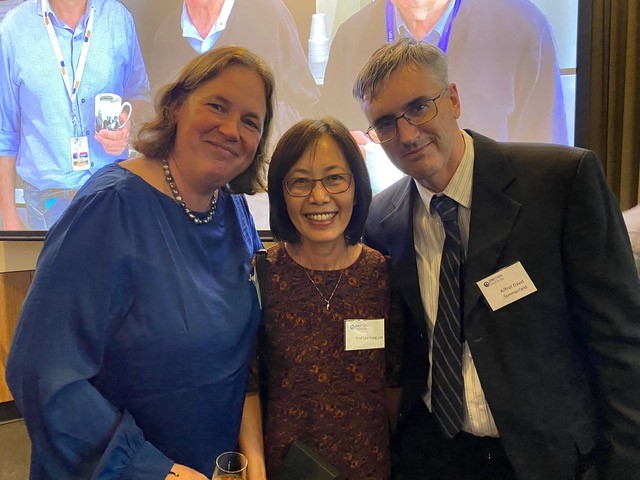Search

The Perioperative Medicine team has developed a unique chewable tablet that gives the child the sensation of having a full stomach, without compromising their fasting regime.
Research
Prenatal Exposure to General Anesthesia and Childhood Behavioral DeficitExposure to surgery and anesthesia in early childhood has been found to be associated with an increased risk of behavioral deficits. While the US Food and Drug Administration (FDA) has warned against prenatal exposure to anesthetic drugs, little clinical evidence exists to support this recommendation.
Research
The Development of a Chocolate-Based Chewable Tablet of Prednisolone—Enhancing the Palatability of Steroids for Pediatric UseOral liquid prednisolone medications have poor acceptance among paediatric patients due to ineffective masking of the bitterness taste of prednisolone. This study aimed to develop a child-friendly prednisolone tablet using a patented chewable chocolate-based delivery system previously applied successfully to mask the bitterness tastes of midazolam and tramadol.
Research
High-flow nasal oxygen for children's airway surgery to reduce hypoxaemic events: a randomised controlled trialTubeless upper airway surgery in children is a complex procedure in which surgeons and anaesthetists share the same operating field. These procedures are often interrupted for rescue oxygen therapy.

News & Events
Inaugural Byron Kakulas medal awarded to Perioperative Medicine TeamA research team dedicated to making anaesthesia and surgery safer and more comfortable for babies and children has been awarded an inaugural Byron Kakulas Medal by WA’s Perron Institute.
Research
Efficacy of a hybrid technique of simultaneous videolaryngoscopy with flexible bronchoscopy in children with difficult direct laryngoscopy in the Pediatric Difficult Intubation RegistryChildren with difficult tracheal intubation are at increased risk of severe complications, including hypoxaemia and cardiac arrest. Increasing experience with the simultaneous use of videolaryngoscopy and flexible bronchoscopy (hybrid) in adults led us to hypothesise that this hybrid technique could be used safely and effectively in children under general anaesthesia.
Research
Paediatric Medicinal Formulation Development: Utilising Human Taste Panels and Incorporating Their Data into Machine Learning TrainingThis review paper explores the role of human taste panels and artificial neural networks (ANNs) in taste-masking paediatric drug formulations. Given the ethical, practical, and regulatory challenges of employing children, young adults (18-40) can serve as suitable substitutes due to the similarity in their taste sensitivity. Taste panellists need not be experts in sensory evaluation so long as a reference product is used during evaluation; however, they should be screened for bitterness taste detection thresholds.
Research
Taste-Masked Flucloxacillin Powder Part 1: Optimisation of Fabrication Process Using a Mixture Design ApproachIt is extremely challenging to formulate age-appropriate flucloxacillin medicines for young children, because flucloxacillin sodium (FS) has a lingering, highly bitter taste, dissolves quickly in saliva, and requires multiple daily dosing at relatively large doses for treating skin infections. In this paper, we describe a promising taste-masked flucloxacillin ternary microparticle (FTM) formulation comprising FS, Eudragit EPO (EE), and palmitic acid.
Research
Perioperative steroid prophylaxis for adrenal insufficiency, a single-centre experienceBritta Regli-von Ungern-Sternberg AM FAHMS MD, PhD, DEAA, FANZA Chair of Paediatric anaesthesia, University of Western Australia; Consultant
Research
Kids Voices, the perioperative experience of emergency surgery from children's perspectives: A qualitative studyThe study aimed to better understand children's emergency perioperative experience, a little researched topic. Current literature shows discrepancies between child and adult perceptions for the same healthcare experience. Acquisition of knowledge from the child's perspective can be utilized to improve perioperative care.
